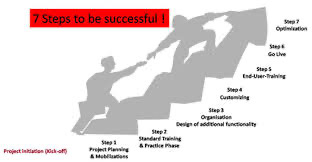
An enterprise resource planning (ERP) system will change the way your company does business. By helping to increase profit through improved efficiencies, enabling decision-making, and facilitating the identification of problem areas that are hindering your business' growth and success, an ERP system might well be the single most important purchase you make for your business.
Too often, companies are not completely satisfied with their ERP implementation or the system they have chosen, says Johani Marais, Channel Manager Africa, Epicor Software Corporation. This is very distressing considering the positive change that can be initiated with a proven ERP system that is skilfully implemented.
Here are some of the most common problems that arise, which can threaten to sink an ERP implementation before it even takes off:
* Ensure you understand your pain areas so that your ERP provider can tailor the implementation to suit your unique requirements. ERP providers are experts in their field, who can help you to delve into the nuts and bolts of your business. They are also objective third parties who can shed new light on business challenges you may not have realized even exist.
* The right ERP package then needs to be selected according to your business's unique requirements and your future growth plans, as well as your budget. Ensure your new ERP system is scalable so it can grow with your business and your budget. Many ERP providers lack the expertise and financial backing to regularly update their products with significant positive evolution encompassing the latest technology.
* Proven ERP providers will have a long history of successful implementations across a variety of sectors. They will assist you in automating processes and outlining every facet of your operations, from start to finish. And they will not deem the project to be completed until the system is working to specification.
* Ensure your ERP provider has enough resources to carry out your ERP implementation. The provider must have an experienced team that is well-supported to carry out a successful implementation in the promised timeframes. After all, is said and done, downtime costs you money and means you won't meet your customers' needs.
* Make sure everyone has a good understanding of what you have undertaken to do and what they need to do to support the project. Too often, businesses don't understand the full depth of the product offering or the jargon that goes with it. At the end of the day, decision-makers have different expertise and come from different areas of a business. It is advisable to employ the services of business process engineers who understand both ERP as well as business processes to assist in the gap analysis between various software packages and the business.
* Commitment can mean the difference between success and failure. Top management must be committed to the success of the implementation and clear goals must be agreed to in terms of their expectations and the expected return on investment. This will ensure the outcome is favorable and as expected.
* There must be clear project objectives and milestones agreed upon from both sides in terms of what is required to make the project a success. This will set the stage for a successful implementation with the least amount of hiccups.
* Organisational buy-in is imperative to the smooth implementation of an ERP implementation. Change management must be the top priority and should be carefully planned and executed to avoid disgruntled employees from sabotaging the project. Considering that human resources are one of your most valuable resources, it is extremely important that the system is well received and there is buy-in across the organization.
* Be clear about the benefits that you expect, and take a careful look at the costs. This will put you in a better position to assess the benefits of the project and ensure you have realistic expectations.
* Ensure users attend training sessions and practice regularly on the test system before go-live so that users are empowered to reap the full benefits of the implementation.